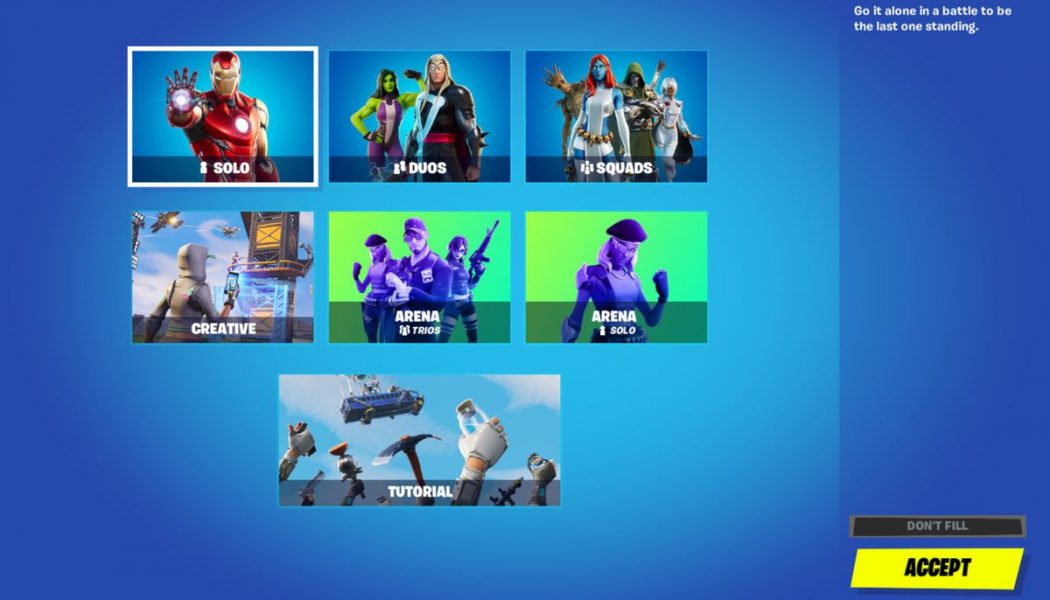Today sees the launch of an exciting new season in Fortnite — but not for everyone. Because of the ongoing legal battle between developer Epic Games and Apple, the game’s latest season won’t be appearing on Apple hardware, including the iPhone, iPad, and Mac. This marks a huge change for Fortnite, a game that has long been at the forefront of crossplay. Now that’s changed. If you’re playing the game on an Apple device — which is still possible if you already have it installed — you’re experiencing a very different version of Fortnite. And it’s one that feels vastly inferior to what’s available on every other platform.
One of the best things about Fortnite is the way it works seamlessly across mobile, consoles, and PCs. Aside from some control and graphical differences, it’s essentially the same game on every device. That means I can play it on my PS4 and then pick up the experience on a Switch, PC, or wherever else using the same account, and all of my progress and customization carries over. It’s one of the reasons I have the game installed on so many devices; I typically play on console, but use the portable versions to sneak in some missions and level up my battle pass while I’m away from the living room.
For the new season, which is Marvel-themed, there are a lot of cool things to dig into. If you purchase the battle pass, right off the bat you’ll unlock a playable version of Thor, and there are some new points of interest on the island as well. My current favorite is a sentinel graveyard, a patch of land full of the towering robots from the X-Men series now reduced to part of the scenery. There are other neat touches that add to the Marvel vibe. You wait for a match on a Helicarrier, and the flying battle bus is accompanied by some planes as it heads towards the island.
:no_upscale()/cdn.vox-cdn.com/uploads/chorus_asset/file/21821997/IMG_0493.jpg)
If you’re playing on iOS, none of these elements are present. Instead, you essentially get a version of the game in stasis, with all of the content up until the beginning of season 4. The loading screen, the lobby, even the island itself remain as they were in season 3. Meanwhile, newly purchased content — like that Thor skin — no longer shows up in your locker. Functionally, Fortnite still works on Apple hardware; you can play matches in a variety of modes just like always. But just a few hours after season 4 debuted, these versions already feel dated. (The only hint of the new season is in the game mode menu, which features Marvel character art.)
Perhaps the most surreal aspect of the Apple version of Fortnite is the lack of any form of progression. The battle pass menu option is no longer accessible, and there aren’t any daily quests to take on. In fact, there are no experience points whatsoever. Typically in Fortnite, everything you do — whether it’s winning a match or opening a chest — earns you a little XP, which goes towards unlocking new characters and other goodies. Now there’s nothing.
Obviously, this makes the Apple versions of the game significantly less appealing. If you use iOS or macOS as your primary platform, you’re missing out on a lot. And even if it’s your secondary option, the lack of cross-platform progression makes this version of the game essentially useless. I can’t see wanting to play Fortnite on my iPad if it doesn’t help me make progress on my main account. You may also lose out on the social aspect of the game, since the iOS and Mac versions no longer support crossplay, meaning you can’t team up with friends on other platforms.
It’s not clear if, or when, this could change. Epic and Apple are currently in the midst of a heated battle that could determine the future of the App Store — and until one of them budges, it’s unlikely iOS will get a version of Fortnite that’s on par with every other platform. It’s a situation that particularly sucks for the large audience that primarily plays the game on iOS. (Android users are safe, since Fortnite can be installed via Epic’s own app.) For now, if you play what’s one of the biggest games in the world on an iPhone, you’re essentially stuck with a time capsule.










